The 10th
LaureateMusic
Sofia Gubaidulina
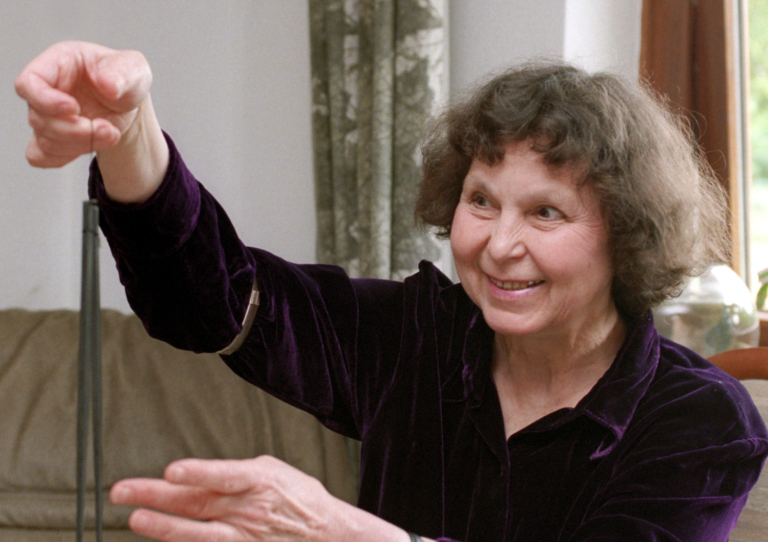
Encouraged by her tutor Dmitri Shostakovich,Sofia Gubaidulina broke free from the constraints imposed upon her and other composers in the Soviet Union to follow a unique path in composition. Her work is unfailingly spiritual both in inspiration and effect,and reveals a powerful personal symbology. In her student days,she formed an ensemble called Astreya,which used folk instruments in an attempt to fuse avant-garde and popular styles. In later works,she deconstructs Western classical music,or creates a religious meditation. In all cases she composes intuitively,trying to reflect an inner vision divorced from worldly concerns. As she says: ‘I am not so much building music as “cultivating” it like a tree from whose roots branches and leaves sprout again and again.’
Biography
‘I want you to continue along your mistaken path.’ These words,spoken privately in 1958 to Gubaidulina by her tutor Dmitri Shostakovich,gave her the resolve to ignore the Moscow Conservatoire’s criticism that,while talented,she was following a ‘mistaken path’. Instead,she continued her composition,determined to remain true to her personal vision.
Sofia Gubaidulina was born in 1931,in the Tartar Autonomous Peoples’ Republic. Among her fellow students at the Conservatoire were the now celebrated composers Alfred Schnittke and Edison Denisov. Shortly after her graduation she formed an improvisation group called Astreya which used rare Russian,Caucasian and Mid-Asiatic folk instruments in an attempt to fuse avant-garde and popular styles,experimenting with unusual approaches to the structuring of time and methods of sound production. Gubaidulina’s work with Astreya has formed the basis of a great deal of her music ever since. For her,composition is a spiritual,religious and organic activity. She has stated that ‘I am not so much building music as cultivating it like a tree from whose roots branches and leaves sprout again and again.’ And again: ‘Every composition is an enormous labour for me. That joy and inspiration at the beginning is like a vertical sound of colourful,moving,clashing chords,completely mixed up and jumbled. It is wonderful and beautiful,but it isn’t real. My job is to turn that vertical sound into a horizontal line. Those two lines,horizontal and vertical,make a cross,and I think about that when I compose.’
In the years up to 1985,when Gubaidulina was first permitted to travel in the West,her music expressed her spiritual convictions without ostentation. For example her work Seven Words,based on the last words of Jesus and during which the cellist’s bow makes the sign of the cross,was known in the Soviet Union simply as Partita for Cello and Bajan. It was the violin concerto Offertorium,1980,that established Gubaidulina’s vision and reputation in the west. The starting-point for this work is the theme of the six-part Ricercar from Bach’s Musical Offering,orchestrated using Klangfarbenmelodie (a technique of passing melody from instrument to instrument,changing tone and colour along the way) in a manner which closely resembles Anton Webern’s version of the same Bach piece. The melody is deconstructed into short cells,a process which is then developed at all levels of the composition,resulting in an astonishing range of musical textures. The theme is gradually obscured through successive repetitions during which notes are displaced and rhythms altered. As the theme is stated and restated,it ‘offers itself in sacrifice’ (in Gubaidulina’s phrase) by losing one or more notes from beginning and end. It is eventually reduced to a single note,before being reconstituted in reverse. Only in the final cadenza do we hear the complete melody,with its final ‘D’ played by the soloist alone in the highest register of the violin.
The influence of Webern’s work on Gubaidulina is profound. On the one hand,his use of mathematical series is paralleled by her fascination with the Fibonacci series,the Golden Section,and other number systems. On the other hand,Webern’s extreme economy of means (some of his pieces are only 12 notes long) represents a distillation of romantic gesture to the point where a single timbre carries the weight of expressive fervour,a process which Gubaidulina variously mimics,reflects upon and reverses. In her case,both these qualities are imbued with spiritual resonance,suggesting a universe preordained by God. As Webern developed Bach’s idea of reflecting the divine presence in the order of music,so Gubaidulina orders music in such a way as to seek out the divine presence.
Gubaidulina also has a great deal in common with her former classmate,Alfred Schnittke. They shared an interest in deliberate historicism,perhaps deriving from the fact that they were both only able to discover western classical music in a fragmented way,since scores and recordings of this ‘decadent’ music were banned in the Soviet Union. The dissection of musical material in their work is evocative of the relish with which they pored over what materials they were able to find. However,it is not strictly accurate to describe Gubaidulina as a polystylist. Her approach is more singular than that and her use of found material is both innovative and idiosyncratic. She has a highly intuitive approach,based on the elaboration of a personal symbology,which emphasises the strength of an inner vision divorced from worldly concerns. The depth of this vision is powerfully summed up in her statement that ‘Art is a manifestation of intuition,a reflection of the wealth of humanity,which you don’t encounter everyday. It arises only in the happiest moments of human life.’
Andrew Hugill
Chronology
The Unasked Answer (Three Orchestras)
Dancer on a Tightrope
Canticle of the Sun (Sonnengesang)I(chorus cello,and 2 percussion
Text (It) by St. Francis of Assisi
-
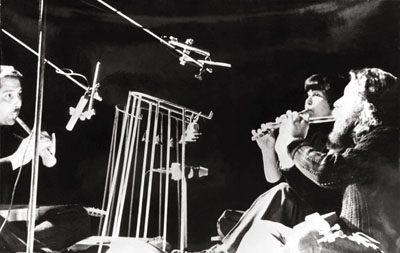
Astreya
-
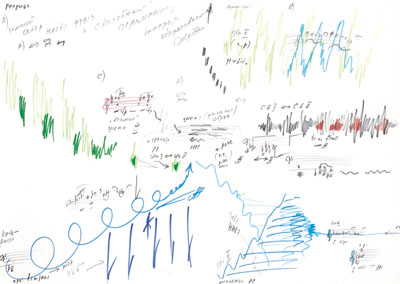
Sketch for Im Schatten des Baumes (In the Shadow of the Tree), 1998
-
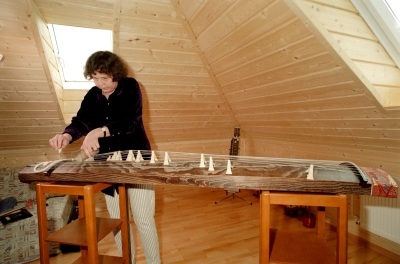
At her home
-
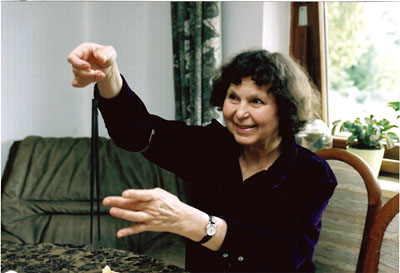
At her home

